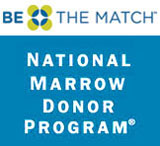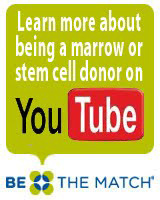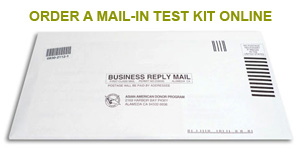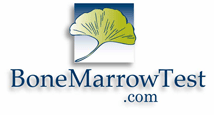Before Launching Your Drive
Learn about
The Disease
Ethnic Focus
Joining the Registry
Donor Programs
Common Myths
Donation Process
Privacy Concerns
Call to Action Tutorials
Online
Blog
Donor Drives (Online)
Email
Facebook
iPhone Applications
Logo
Twitter
Videos
Web Badges
Website
In Person
Business Cards
Buttons
Donor Drives (Live)
Flyers
Logo
Postcards
Signs
Media
This section is under development. The following media tutorials will be online soon.
Newspapers
Online News
PSA's
TV News
TV Programs
Free Online Tools
Illustrations
• Donation Methods
• Transplant
Video
• Donation FAQ's
• Live Drive
Info in Foreign Languages
Join the Donor Program
If you are here not as a patient or adovacte but as someone who wants to join the marrow donor program to possibly be a match and save a life someday please visit:

where you can order a home test kit online or join in person by locating a live drive using their Zip Code locater.

Key Things to Understand Before Launching Your Donor Drive 2. Why Ethnicity Matters Click Here for Details 3. Joining the Registry Click Here for Details |
How People Register to Become a Potential Donor
The Test is a Simple Cheek Swab A KEY POINT TO KNOW: Unless you are running an expedited drive for a patient in critical need it doesn't matter which drive people join. All results are placed in the National Marrow Donor Program Regsitry where they are matched to all patients world wide. The Registration Process 1) Potentail donors need to complete a brief health questionnaire to verify their eligibility to join the registry Option #1 Ethnic Minorities: There is a critical need for more ethnic diversity in the national registry (Asian, South Asian, Pacific Islander, African American, Native American & Alaskan, National Hawaiian, Hispanic, and Multi-Racial) your tissue typing costs are completely covered by a federal grant if you are of any minority ethnicity or your descent is of mixed ethnicities.
Locate a LIve Drive Anywhere in the U.S. on the Be The Match Website (CLICK HERE) Testing is free to all thanks to Federal Grants and fund raising. Joining is easy. Patients need donors who are between the ages of 18 and 44, in good general health, and are willing to donate to any patient in need. Option #3 Option #4
 A fifth way to donate into the registry exists A fifth way to donate into the registry existsDonate Umbilical Cord Blood: In the past, when a baby was born, the umbilical cord was thrown away. But today, blood from the umbilical cord can be collected after a baby's birth and donated to a public cord blood bank to help someone with a life-threatening disease. (more info here)
|
Back to Top of Page
All contents Copyright © 2009 - 2011 MarrowDrives.org. All rights reserved. All contents can be copied and re-posted for any and all not-for-profit purposes. Link backs are appreciated but not required. Disclaimer: The information and suggestions on this site are just that and should not be interpreted as medical or legal advice. Please consult a physician or practicing attorney for any formal advice regarding these issues. Information on any third party links located on this website are only verified by the original source. |




